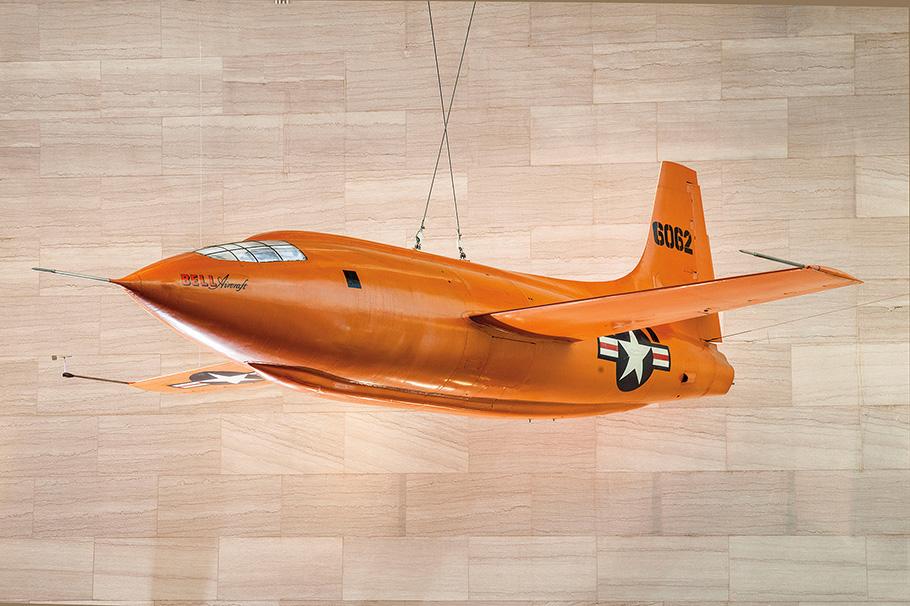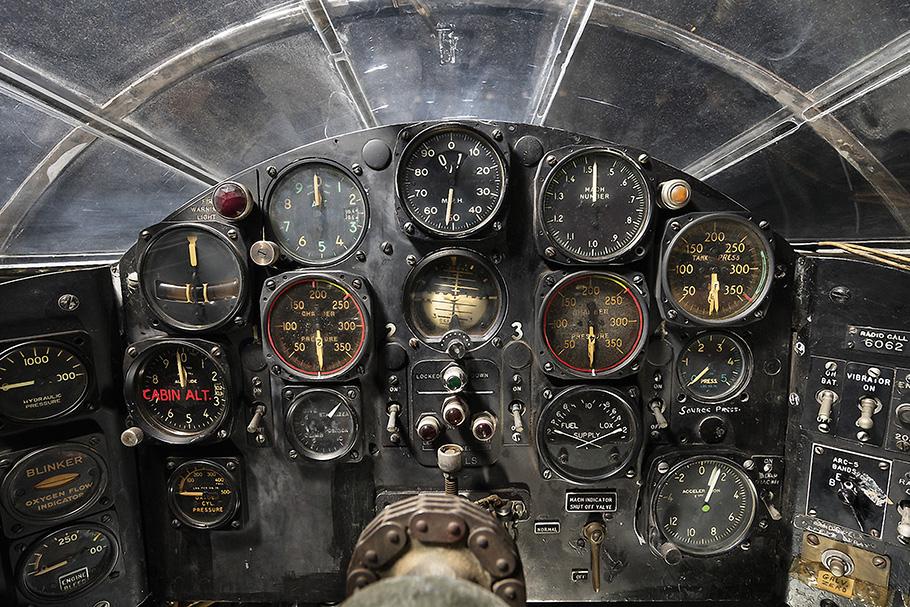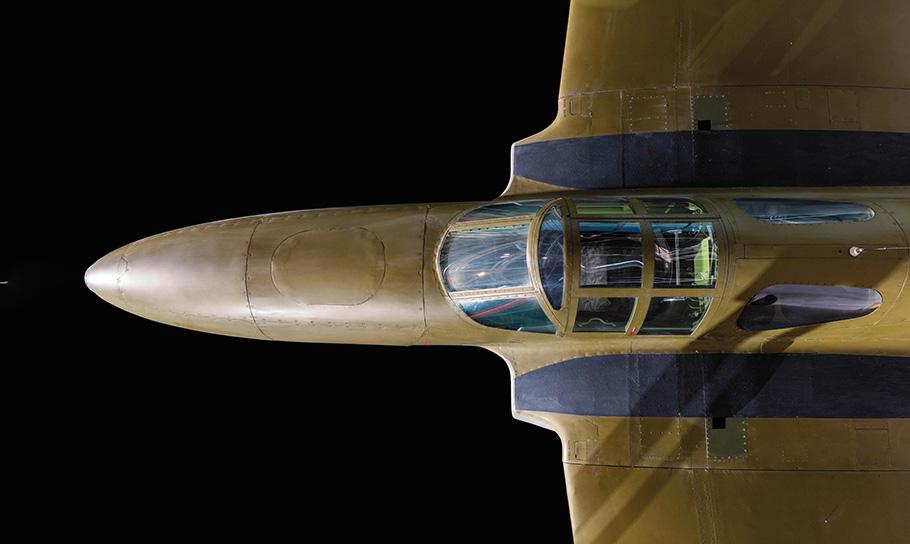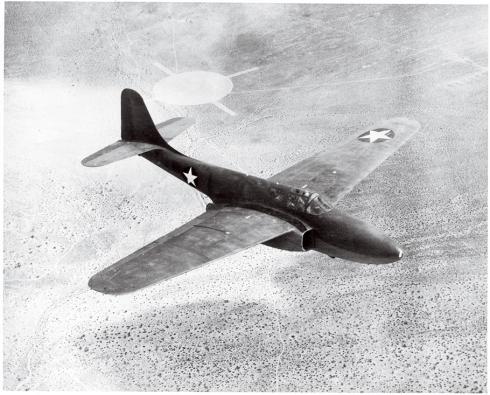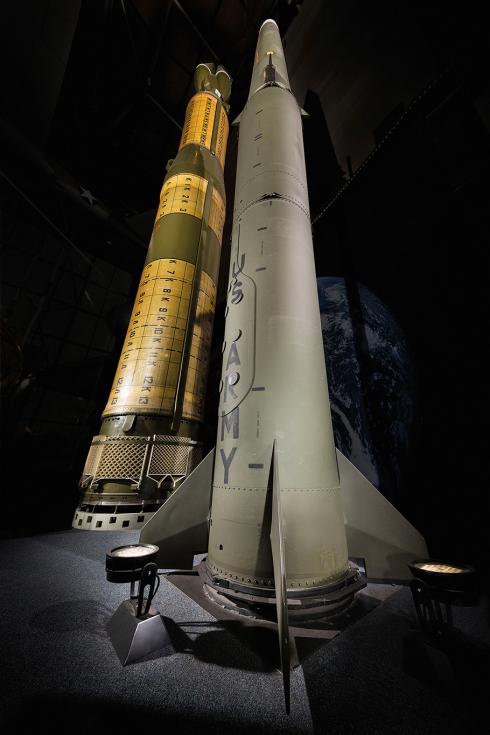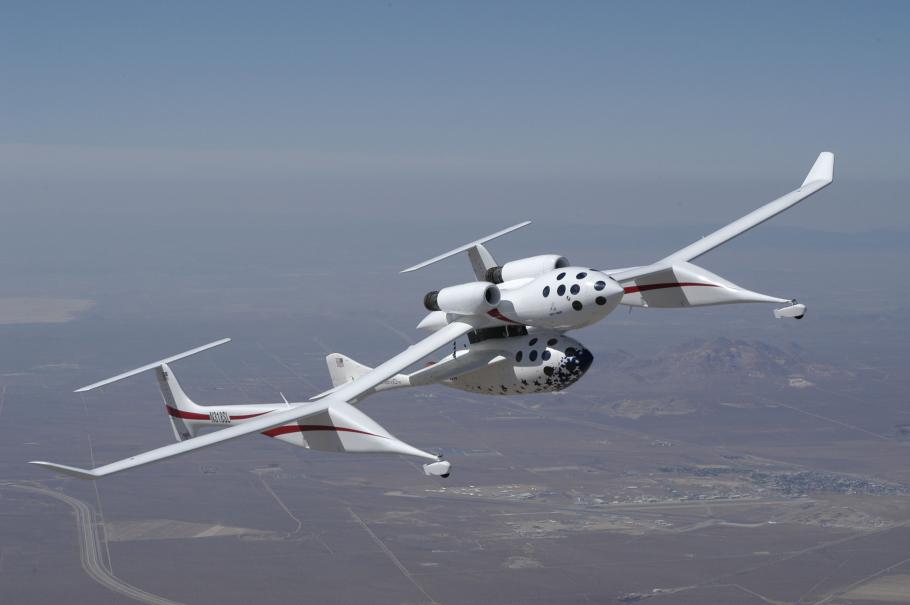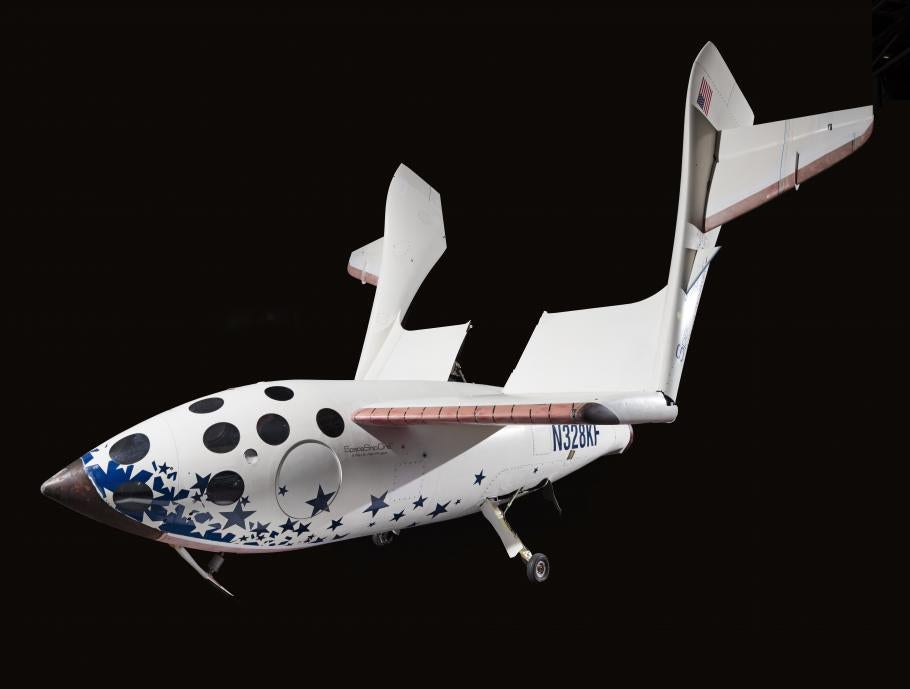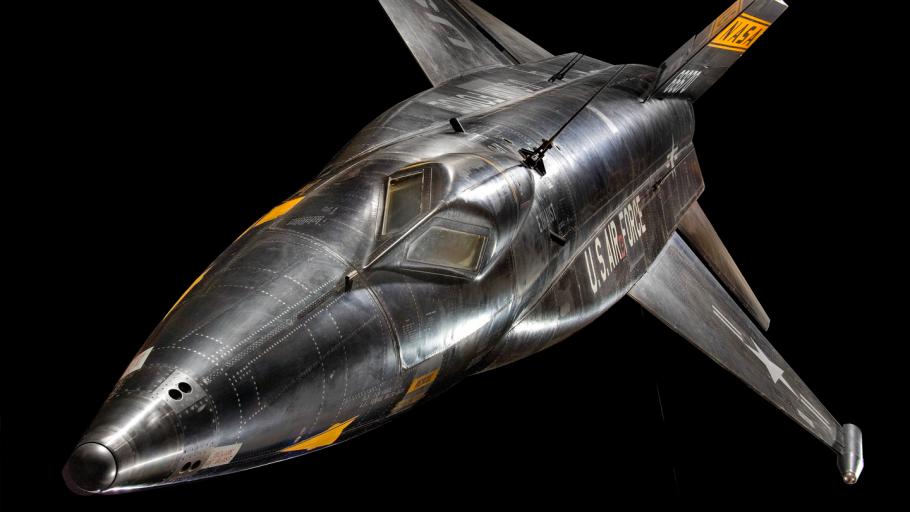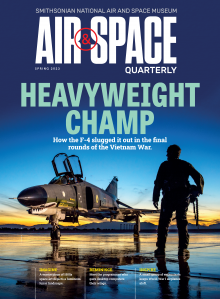Where else can you see the first aircraft to break the sound barrier—and John Glenn’s Friendship 7 space capsule?
The world changed on the morning of October 14, 1947. In the bright sunshine over California’s Mojave Desert, Chuck Yeager pushed the rocket-powered Bell X-1 to Mach 1.06—just past the speed of sound. When Yeager, a U.S. Air Force captain and test pilot, entered the X-1’s cockpit that day, no one knew for certain if the little orange aircraft could quell the aerodynamic buffeting that had plagued it during earlier test flights. The X-1’s successful flight 76 years ago was a critical step on the path that has led to modern military jets routinely flying at supersonic speeds.
Made of high-strength aluminum, the Bell X-1 (serial number 46-062) has a bullet shape and short, thin wings that were designed to handle the aerodynamic forces of transonic and supersonic flight.
The X-1’s achievement in transonic and supersonic flight marked a milestone in aeronautical development. Not surprisingly, the X-1 is one of the most valuable artifacts in the collection of the National Air and Space Museum. This gem of an aircraft has long anchored the Museum’s Boeing Milestones of Flight Hall, and when the revitalized exhibition opens next year, the X-1 will once again take pride of place in the center of the refurbished gallery.
The X-1’s instrument panel is old-school, and the lack of automation in the cockpit meant that flying the rocket-powered aircraft was strictly a hands-on exercise for its pilot.
Beyond the X-1, the new exhibit space will introduce visitors to other significant events in aviation and spaceflight that have profoundly changed transportation, science, warfare, exploration, commerce, and culture. More than just technological firsts, the artifacts displayed in this elegant gallery reveal how advances in science and technology have impacted our daily lives and influenced politics in the United States—and the world—in the 20th century and beyond.
With artifacts arrayed along walls and suspended from the ceiling—and interpretive displays that provide background and context—this central gallery of the National Mall building will invite visitors to explore the diverse and rich collections that make up the rest of the Museum’s exhibits, both in Washington, D.C., and at the Steven F. Udvar-Hazy Center in Chantilly, Virginia. Banners featuring important individuals in aviation and spaceflight, as well as a large media screen, will help bring these historic figures to life.
Part of the gallery is already open. Visitors to the Museum’s south lobby can see the Starship Enterprise studio model used in the filming of the original Star Trek television series as well as the Goddard hoopskirt rocket and the Loving homebuilt airplane. Spectacular murals by Robert McCall and Eric Sloane (originally painted in situ on linen mounted on the walls) have returned after being removed for restoration.
But the south lobby offers just a glimpse of what is to come next year. Gone is the Spirit of St. Louis (it will move across the way to become the centerpiece of the renewed Barron Hilton Pioneers of Flight gallery). In its place is the Lunar Orbiter. Displayed beneath it will be the Museum’s Apollo lunar module; John Glenn’s Mercury capsule Friendship 7; the Gemini 4 capsule, from which Ed White conducted America’s first spacewalk; and a Viking lander like the one that pioneered the exploration of Mars’ surface.
The twin-engine XP-59A had a single-seat cockpit. The experimental craft logged just under 60 hours of flight testing before being retired from service.
Where are the other famous aircraft? They are returning. In addition to the Bell X-1, you will once again see the Bell XP-59A Airacomet. Innocuous in design and drab in its camouflage paint, the XP-59A nevertheless pioneered the Jet Age in the United States. America’s first turbine-powered aircraft, the XP-59A revolutionized combat aircraft and air travel following its first flight on October 1, 1942.
The Bell XP-59A Airacomet—flying over the Mojave Desert in October 1944—is the first American jet aircraft.
While no faster than conventional propeller-driven aircraft at that time, it did teach a new generation of U.S. Army Air Forces pilots how to fly jet fighters. Stunning in its all-black Inconel X metal skin, the starkly angular rocket-powered North American X-15 remains today the fastest piloted aircraft ever to fly in the atmosphere. Designed to explore the unknown reaches of hypersonic flight above Mach 5—five times the speed of sound—the three X-15 aircraft tested the limits of flight at speeds above 4,000 miles per hour and at altitudes so high they rose briefly into space. Completing 199 missions between 1959 and 1967, the X-15s conducted what is widely considered the most successful experimental aircraft program in history.
The new gallery will display two missile types that were banned by the Intermediate-Range Nuclear Forces Treaty, which was signed in 1987: the Soviet SS‑20 (at left) and the U.S. Army Pershing II.
Like the X-15, SpaceShipOne was also rocket-powered, flew a trajectory that crossed into space, and was air-launched from a mothership. Unlike the X-15, SpaceShipOne is constructed mostly from a graphite epoxy composite. And SpaceShipOne was not a U.S. military program. Privately developed, the vehicle made the first commercial flight into space—on June 21, 2004. (In 2005, the SpaceShipOne team won the National Air and Space Museum’s annual trophy for current achievement.)
With its movable wings and an almost whimsical appearance, SpaceShipOne is a brilliant example of how departing from conventional technology can succeed.
The new gallery’s educational substance is expressed even in its floor: The old carpet has been replaced by terrazzo, and embedded within the surface is a pulsar map, like the ones created for the Pioneer 10 and Voyager spacecraft. (While the gallery is not yet open, part of the pulsar map is now visible as it extends from under the construction wall into the floor of the south lobby.)
The pulsar map is a way of pointing toward Earth’s solar system by referencing the distance and direction from 14 different pulsars. Since pulsars slow down over time, the map locates Earth’s solar system in both place and time.
We think the new Boeing Milestones of Flight Hall presents a solid case for how aviation and spaceflight have changed the world, and we hope that a visit here inspires you to dream of future milestones yet to be set.
F. Robert Van Der Linden is a curator in the National Air and Space Museum’s aeronautics department.
This article is from the Spring issue of Air & Space Quarterly, the National Air and Space Museum's signature magazine that explores topics in aviation and space, from the earliest moments of flight to today. Explore the full issue.
Want to receive ad-free hard-copies of Air & Space Quarterly? Join the Museum's National Air and Space Society to subscribe.
